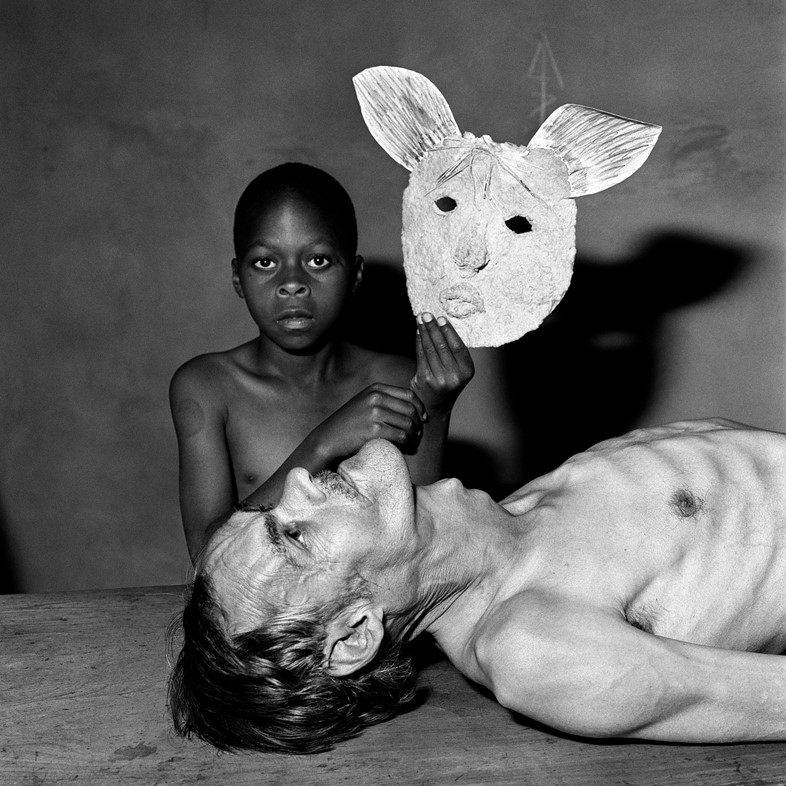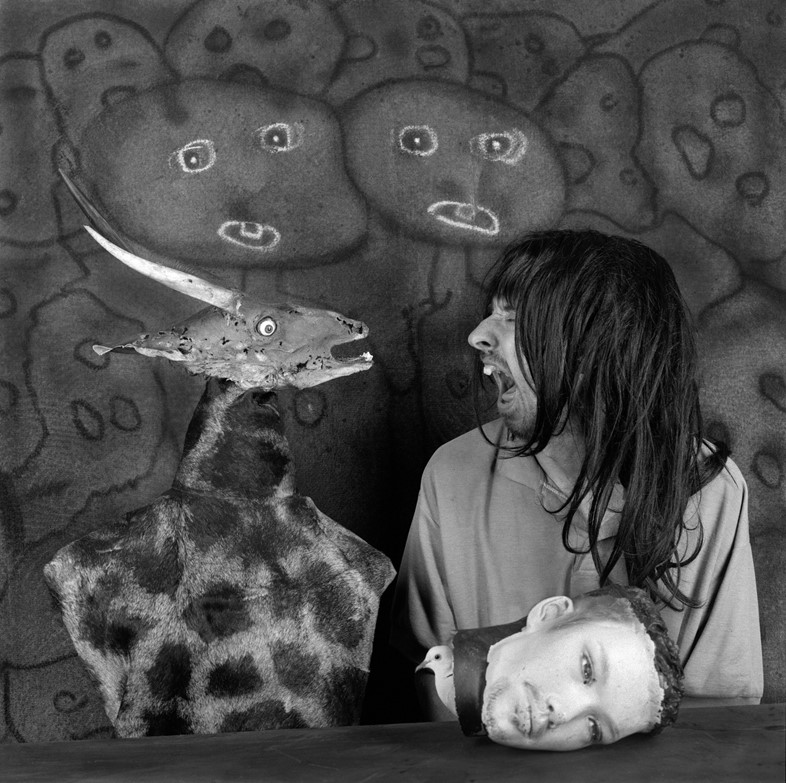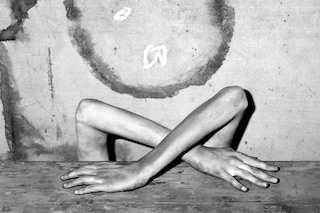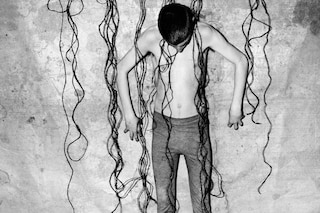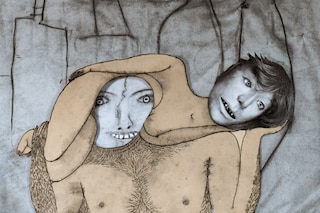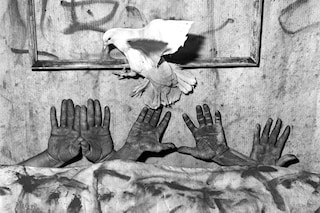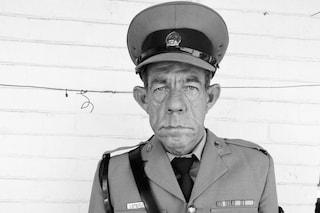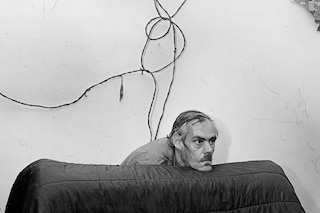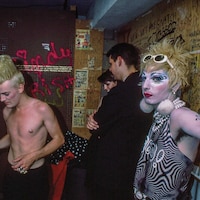The art-photography absurdist and Sigmund Freud fan explains how to push the medium beyond its means
There are few people who can mess with your subconscious in the same way that absurdist photographer Roger Ballen can. One of those is psycho-analysist Sigmund Freud – so it’s not surprising to hear that he is one of Ballen’s strongest conceptual influences. For over 50 years, Ballen’s extremely composed, surreal psychodramas have questioned reality and pervaded places, dark places, in people’s minds with a hope that this existentialism may change the wider world. Child-like drawings sprawl across walls while prosthetics blend with real limbs and animals appear in places they don’t belong. It’s fucking unnerving – and now he’s coined a term for this effect, released alongside a 350-page, five-kilogram retrospective photo book of his work: Ballenesque.
Based on an entirely new appraisal of Ballen’s archive, Ballenesque charters 50 years of work as an ode to his mastered and distinctive aesthetic. Taking readers on a visual tour through his most esteemed series, Ballenesque shows 300 works from (among others) Outland, shot on the fringes of South Africa, Shadow Chamber, Asylum of the Birds and Theatre of Apparitions. Previously unpublished photos also appear alongside 40-50 pages written by the artist as he details personal accounts of his career, practice, and influences. We spoke with Roger Ballen about the psychology that has informed his art.
“No one else in photography or even art produces the type of work that ends up very quickly in people’s subconscious mind” – Roger Ballen
What prompted you to publish your first retrospective at this point in time?
Roger Ballen: I’ve been wanting to do this book for sometime, but I wanted to complete Asylum of the Birds first. So I did that and then I felt it would be incomplete to do it without the next book, Theatre of Apparitions, which we published last year. I then felt it was the right time to do the retrospective, because in a way, the Ballenesque aesthetic is more complete with these two projects. It’s important in a book like this to show a culmination of the aesthetic – so this is what prompted me. I am also 67-years-old now so I think it’s time to do it.
How do you define Ballenesque?
Roger Ballen: Ballenesque is the aesthetic, a very particular aesthetic that has come from my engagement with photography. When one sees one of my photographs or installations, you can immediately say, ‘well that's Roger Ballen’. No one else in photography or even art produces the type of work that ends up very quickly in people’s subconscious mind. It challenges people to think about themselves and think about the world and they bring their subconscious mind forward. The Ballenesque pictures are also pervaded by animals. They are another important element to the aesthetic that I am creating.
How so?
Roger Ballen: The animals can be seen in two different metaphorical ways. Animals are making a comment on the link between humanity and animal behaviour. Then the other important thing is that when you look at the pictures, you have to reflect on the state of animals in the world. The state of animals is in a very bad state. The animals are in this so-called Ballenesque state. There’s no harmony between humanity and the animals in my pictures, which is a metaphor for reality. As much as people like to play with their cat at night, the reality is that there is a terrible thing that has been going on.
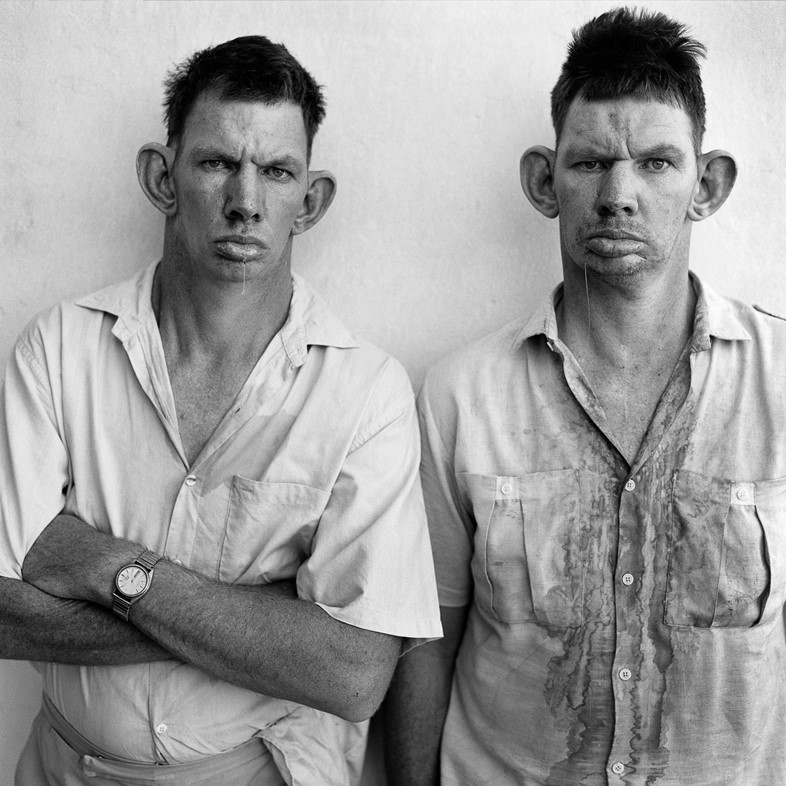
Your metaphorical use of animals is an example of how you push photography beyond realist means. When did you realise that you could push photography beyond documentary?
Roger Ballen: It was step by step by step. Even in the early days, in my first books, these pictures have always been a psychological journey. I never thought of myself as a social-political photographer, all my projects had more of a psychological, existential purpose to them. The images themselves, up until the mid-90s, had a documentary aspect to them. Beginning in 96-97, I started to see myself as a photographer artist and started to transform the world in a really particular way – I started to believe I could create an aesthetic that had something unique about it.
Which in photography is so hard to do...
Roger Ballen: You are 100 per cent right. And every year it is getting harder and harder to rise above these billions and billions of images taken every week. In the last ten years, the amount of photographs taken on the earth has gone up 10,000 times. You have to create images carefully, you can't just do it. The images have to be able to penetrate people's subconscious mind, really quickly. Most images we see don't do this – it’s really hard to penetrate that part of the mind. But if they get deep inside of you, then you remember them.
Would you say your absurdist approach to photography helps that penetration?
Roger Ballen: Absurdity has a very deep, existential relationship to people's understandings of themselves even though they may not admit it. We all know that we are here for a limited amount of time, we all know that we really don't know why we are here, we all know that ultimately, no matter, we are going to die. We all know these things even though we don't want to admit to it. Or we try to run away from it. But those pictures in some way ring a bell subconsciously so people remember them because it has a subconscious meaning. And whether they want to admit to it or come to terms with the meaning, it’s there. It’s right in your face.
“It’s very difficult in my work to decipher what’s real and what’s not – what did I create and what was already there? It creates a strange enigmatic line for the viewer – is this Roger's imagination or is this really a place?” – Roger Ballen
What is the value of absurdist art then?
Roger Ballen: That it allows people to reflect on their existence or come to terms with, hopefully, their existence. If the pictures have touched something in your subconscious mind, then you become aware of it. It’s kind of like your dreams. In some ways, they help you understand what you really feel or think.
It’s very Freudian sounding...
Roger Ballen: It is Freudian. There is so much profundity in what Freud said, so you can't get around it. The subconscious mind is a really important way to look at human behaviour.
Is Freud one of your biggest influences?
Roger Ballen: Well there are conceptual influences, he is one and another one is Samuel Beckett. In the art side, the greatest influence for me is Art Brut: artists who explore primitive art, children’s art, insane art. This has played an important role in my understanding of art and the subconscious.
What do you mean when you reference your work as “documentary fiction”?
Roger Ballen: It’s very difficult in my work to decipher what’s real and what’s not – what did I create and what was already there? It creates a strange enigmatic line for the viewer – is this Roger's imagination or is this really a place? This runs through my work for the past 25 years. It challenges the mind, challenging people to reconcile real from unreal.
Ballenesque features shots from one of your first series, Outland, where you captured people on the fringes of South Africa. What is Outland?
Roger Ballen: Outland is a place of the mind. A place on the edge, the margins of the mind. It's a place that we are scared to go to, it's not necessarily a socio-economic place – I think this is very important to realise. It’s not a place of poverty. It's a place on the edge... a state of mind. This is what Outland means. It's a place of the surreal. It's a place where chaos prevails.
Outland was the start of your use of mixed mediums. What value did introducing mixed mediums have on your work, for example the drawings on the walls?
Roger Ballen: A lot of my works incorporate drawings on the walls. In modern society, drawing on the walls is thought to be an act of insanity. But I saw it as an act of creativity. A lot of the houses I went to for Outland had drawings on the wall so I started to incorporate these drawings into the photographs. The drawings add another level of ambiguity and complexity to the work. They bring another state of mind to the picture. But it's ambiguous. I’ve always said that if you can explain the picture in words, it's a bad picture. If you can say you can understand the work in every way then it's a bad picture. It's not an artwork to me.
Shadow Chamber is another important series to the book as it surrounds themes of darkness that you commonly explore…
Roger Ballen: The Shadow Chamber was a building that I worked in. The darkness is not necessarily bad or evil, the darkness can mean light. There's nothing wrong with the night. Dark isn't bad, dark sometimes means truth. There can be truth in the dark.
“Truth can come from darkness and coming to terms with one’s own fears” – Roger Ballen
How do you find truth in darkness?
Roger Ballen: First of all, what do we mean by darkness? For most people, it means being evil, scared or anxious – not being able to cope. For me, darkness is a challenge – it’s about the unknown. If you say part of my mind is dark, then it is something unknown and something I want to charter and find out more about. It’s hidden from me and I think there's a lot of truth hidden. For me, this is where truth can be found. It's in the things that we repress. For most people, darkness is scary because it's what they repress and if you reveal it to them, it can be very cathartic and it can lead to truth. For me, the truth can come from darkness and coming to terms with one’s own fears.
Has your work been cathartic for you?
Roger Ballen: Definitely. I am very lucky at age 67. I feel like I did when I was in my early 20s.
What advice can you give to young photographers wanting to innovate the medium?
Roger Ballen: Two pieces of advice: to get to a certain level in photography you have to work hard, with passion, with discipline, with focus. And year, after year, after year, it's not something that all of a sudden comes. There's a real commitment that you have to make. And if you really want to do this, you have to find some sort of balance because it’s almost impossible to succeed as a young person art photographer: you have to find another career to support yourself. I was a geologist for 25 years, I have a pHd in Geology. That's how I kept it going because I had my own profession.
You can find out more about Ballenesque, Roger Ballen: A Retrospective here
